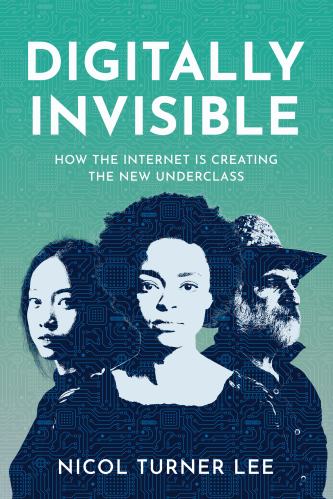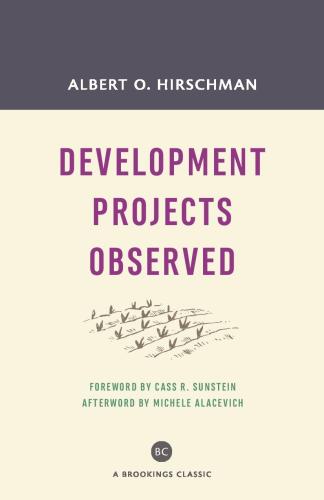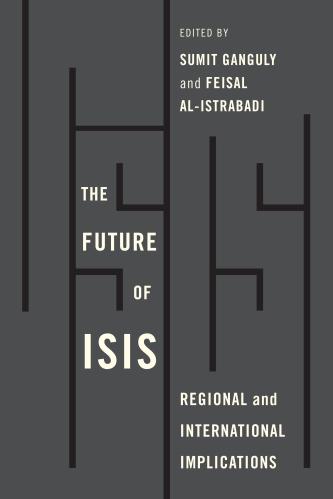President-elect Joe Biden has vowed an agenda to build back better. And he can do this provided high-speed broadband access is part of his broader economic recovery plan. President-elect Biden will face an overwhelming list of priorities in his first 100 days, including a national vaccination strategy, school re-openings, policing reform, and possibly a second impeachment trial precipitated by the historic insurrection at the U.S. Capitol. More than 100,000 small businesses have permanently closed during the pandemic, and the nation’s unemployment rate remains unchanged at 6.7% in December 2020 with 10.7 million people unemployed. The pandemic has starkly affected many U.S. industries with the hospitality, retail, and leisure sectors disproportionately impacted. High unemployment has led to increased food insecurities among adults-only households and those with children are less likely to get enough to eat during the pandemic. Eighteen percent of adult households without children reported that they didn’t have enough food, as compared to 11% of those with children.
In the 1930s, former President Franklin Delano Roosevelt faced rapid economic declines following the stock market crash. He responded with the New Deal, a variety of social and economic programs to stabilize the market and encourage worker security through the establishment of unemployment insurance, greater collective bargaining, and social security. In his weekly radio address on April 7, 1932, Roosevelt shared, “I cannot escape the conclusion that one of the essential parts of a national program of restoration must be to restore the purchasing power to the farming half of the country. Without this the wheels of railroads and of factories will not turn.”
Roosevelt’s words should resonate with President-elect Biden, but this time technology should be one of the spokes on the wheels of the modern economy. While some industries suffered financial blows over the course of the last few months, other industries exceeded financial expectations, like the tech giants. Companies that include Amazon, Google, Facebook, and Apple reported third quarter earnings in 2020 that surpassed prior ones and economic projections. For example, Amazon’s revenue surpassed $96 billion in earnings, and $6.3 billion in profits, which allowed the company to add nearly 400,000 jobs in 2020. The increase in revenues can be largely attributed to the shifts in consumers’ purchasing patterns and the strict mandates of the pandemic to shelter-in-place. A McKinsey report also reported that many other businesses rushed to digitize their business products and practices within a few short months to also maintain resilience.
Internet service providers (ISPs) like AT&T, Comcast, Verizon, and others have also fared well financially as more people have come to rely upon online access for commercial, educational, and remote work. The dependencies on both wireline and wireless services have precipitated increased network demands, accelerated automation, and pushed for continued 5G deployments despite the pandemic. On the latter point, over four million jobs will be 5G or related technology opportunities and have higher than average wages, according to a new report from the Progressive Policy Institute. But, the U.S. does not have an adequate 5G workforce without an emphasis on national skilling, which can be one of the main drivers for both infrastructure revitalization and national job creation for Biden’s overall recovery strategy.
Almost half of Americans also reported the importance of internet access during the pandemic, according to Pew research. But digital access has not been ubiquitously deployed or equally adopted. New online dependencies have widened the nation’s digital divide, leaving some people of color, older and low-income populations, and those from rural (and some urban) areas unable to consume certain products and services. These vulnerable groups are also greatly impacted by the pandemic’s social isolation, which has excluded them applying from unemployment or getting online for distance learning and remote health visits.
The U.S. needs a “Tech New Deal”
Roughly 15 million Americans were out of work during the 1930s and former President Roosevelt was determined to restore American trust in the federal government by remedying economic fault lines. His first iteration of the New Deal program aided in the stability of the markets through increased banking regulation, economic relief programs, job training and new workforce opportunities, agricultural reforms, and a range of new federal agencies to provide both oversight and program support of said initiatives. The second iteration of his New Deal resulted in social security, unemployment insurance, the right to unionize and worker collective bargaining. During Roosevelt’s tenure, the country gained new roads, bridges, and dams undertaken through such initiatives like the Tennessee Valley Authority (TVA) or the Civilian Conservation Corps (CCC). The TVA, which was established as part of the Tennessee Valley Act of 1933, constructed the dams to control flooding, create and expand electric power throughout the Basin, and is now the largest private power company in the U.S. The CCC, a work relief program, employed Black Americans in newly created environmental jobs despite the continued influence of segregationist policies throughout the U.S. It not only served as the benchmark for the current conservation jobs, but also a demonstration of how work relief could extend to all races, including Native Americans.
The U.S. saw increased federal intervention to inspire economic growth under Roosevelt, which some have argued was the first time that the government played a significant role in such activities. Unfortunately, the federal interventionist approach undertaken by Roosevelt was not wholly effective, given the plethora of problems facing the country through World War II. Moreover, increased bureaucracy turned out to be not entirely sustainable as market demands for improved infrastructure, and electricity grew.
Nevertheless, the New Deal framework is one in which Biden should consider as the nation steers ahead to restore purchasing power by returning people back to work and emboldening the revitalization of certain infrastructure necessary to reach these goals. Biden does not need to replicate the plethora of government agencies and programs to achieve the same goals of fiscal normalcy, reduced unemployment, and better national infrastructure. He should center technology as complementary of his other priorities, such as scheduling COVID-19 vaccinations. Concurrently, the Biden team should establish the “Tech New Deal” to drive broadband investments in rural and urban areas, close the digital divide, increase workforce training in tech and related industries, and invest in local digital infrastructure from community-based organizations to diverse tech startups as means to national and local economic revitalization.
The underpinnings of the Tech New Deal should first evaluate and modernize federal programs that incentivize broadband deployment and adoption, like the Universal Service Fund (USF), which is managed by the FCC and funds infrastructure and affordability programs. Reforms of USF should involve the review of its outdated programs, strict allocation of resources (primarily in rural areas), and the focus on technology-specific investments that have stifled widespread broadband coverage and adoption. USF reform should promote technology-agnostic solutions, engage in contribution reform, and utilize national and local broadband data to improve efficacy in infrastructure deployments. The Lifeline affordability program can be better utilized via increased provider participation and perhaps new contributions from other tech companies and not just ISPs. It also should be immediately available through federal agencies that work with vulnerable populations to bridge housing, food, and other income insecurities, as well as veterans.
Schools and communities also receive support from the FCC via the E-Rate program. But statutory restrictions limit home broadband access for eligible K-12 students, especially those in federally subsidized housing. This should be changed and Wi-Fi hot spots should be available around the entire perimeter of schools, libraries, and community-based organizations—transforming “digital parking lots” into “digital parks” and lighting up community centers.
A Tech New Deal under the Biden administration can help close the broader digital divide by accelerating broadband deployment in un- and under-connected rural and urban areas, creating incentives for broadband adoption through local funding of pilots and a digital service corps, and facilitating workforce training and financial investments for Americans benefitting from advanced communications. Schools should be able to leverage the Tech New Deal to ensure that K-12 students are online following the pandemic and in the wake of other natural disasters, such as the California wildfires. Resources from federal agencies including the Department of Labor can cultivate tech-enabled workforces by funding credential-based apprenticeships focused on jobs in 5G, cloud-based industries, and other tech-related industries.
An all-hands-on deck approach and critical investments from all industries benefitting from the technology ecosystem—from banks to platform companies—should be part of the Tech New Deal, advancing beyond some of the usual dogma of tech and telecommunications policy debates. Instead, the Tech New Deal invites reimagined public policies and diverse stakeholders from industries, state and local governments, and civil society organizations to codify how technology can spur economic growth and shifts in service delivery for citizens.
Components to get us started
Unlike Roosevelt’s plans for his New Deal, this modernized retake is data-driven and thoroughly re-examines existing federal programs for modernization, while creating inter-agency collaboration. In addition to these proposals are a few others that I will explore in future blog posts:
- Transition USF receipts to an appropriation that is part of Treasury funds to provide immediate and long-term broadband benefits in the areas of deployment, and adoption by households, libraries and schools. As part of the appropriation, continue to allocate some portion of funds for the emergency broadband relief program during and post-COVID to remedy affordability concerns and expand contributions to network beneficiaries.
- Remove the statutory limitations and redirect E-Rate funds to affordable broadband access for households with K-12 students, especially among residents of federally assisted housing. Leverage E-Rate funding for targeted community public access points (e.g., digital parks, libraries, and public Wi-Fi).
- Complete the national broadband mapping with the appropriated congressional funds and include more granular census tract-level data to help direct funds more precisely to un- and under-served areas.
- Institute immediately a “No Child Offline” program at the Department of Education and administered jointly with the FCC to support school re-openings through broadband access, device lending programs (e.g., lap tops, tablets, and portable hot spots), digital training, and the internal organization of an Office of Innovation placed in every school district.
- Give resources to local projects and partnerships with proven track records for closing the digital divide via challenge grants or other strategic public, private, and/or philanthropic partnerships.
- Solicit a GAO study to evaluate existing low-income broadband adoption programs and concretize findings into a national initiative or document of best practices.
- Create a paid civilian corps of tech volunteers to assist in adoption, utilization, and infrastructure deployment as an extension of the existing Corporation for National and Community Service.
- Develop critical workforce development programs to create a pipeline of workers for broadband infrastructure and related support jobs (e.g., 5G installers, data analytics, customer service, etc.) that provide livable wage careers.
- Implement a formal credentialing and certification program for broadband jobs through the Department of Labor via established funding for apprenticeships.
- Identify access to capital for diverse founders of start-ups to create more jobs for diverse communities and expand their businesses into the mainstream tech ecosystem.
- Raise awareness among minority- and women-owned businesses about federal contracts related to the tech and telecom industries to help with capital infusion, job creation, and business expansion.
- Provide tax credits to tech and telecom companies with public diversity and inclusion goals and voluntary input into an “Equity Dashboard” for their firms so others can chart the progress or lack thereof.
Taken together or apart, these components of an emerging Tech New Deal can be game changing and inclusive in its representation and outcomes toward economic recovery. The incoming administration has its choice of big projects over the first 100 days post-inauguration. Integrating an aggressive, yet feasible tech agenda into the suite of other proposals can be transformative as the country puts the pandemic behind us.
Apple, Amazon, Facebook, and Google are general, unrestricted donors to the Brookings Institution. The findings, interpretations and conclusions in this piece are solely those of the author and not influenced by any donation.
The Brookings Institution is committed to quality, independence, and impact.
We are supported by a diverse array of funders. In line with our values and policies, each Brookings publication represents the sole views of its author(s).











Commentary
Why America needs a “Tech New Deal” to build back better
January 12, 2021